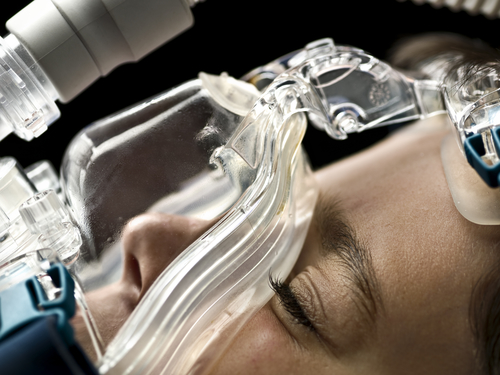Sylvia Hartl: The method of noninvasive ventilatory support (NIV) was established as a new standard treatment for ventilatory failure nearly 30 years ago. Respiratory specialists very quickly adopted NIV to counterbalance the burden of air trapping in acute respiratory failure in asthma and COPD. The development of pressure support in small home ventilators soon led to the use of NIV outside of ICUs. Today, respiratory care units, as step down units of ICUs, are part of respiratory departments and the European curriculum recommendations from the HERMES programme define NIV as a standard skill of trainees.
Nevertheless, the European COPD Audit for the treatment standards of acute exacerbation on hospital admission of COPD (1) still revealed a huge inhomogeneity in the provision of NIV throughout Europe. It seems that many of our colleagues in emergency departments are quite reluctant to do blood gas analysis on admission and to establish triage criteria for the use of NIV in acute hypercapnia. We need arterial blood gas analysis to detect respiratory failure with respiratory acidosis and PCO2 elevation.
On the other hand, even in cases of respiratory failure, the COPD Audit showed that on many occasions, staff took a decision against ventilator support. This might be for good reasons in well-known patients, but we only found a few refusals patients themselves.
For me as a clinician, it seems difficult to have to take an end of life decision (EOLD) in the situation of acute admission. We would rather give a trial of the ventilator than withhold ventilatory support, as withdrawal of the ventilator in non-responders is easier to decide. Patients with chronic diseases, where the lifespan is difficult to predict, often fail to accept an EOLD. We have far more patients with amyotrophic lateral sclerosis taking an EOLD than patients with COPD taking one.
The first step to establish NIV as a standard therapy in acute respiratory failure is to implement technical equipment of NIV as well as trained staff in all acute settings.
Strong support for COPD standards of care is still needed. When we look at a comparison with chronic heart failure, all methods that could potentially keep patients in better performance status are actively encourages and considered – chronic respiratory insufficiency is no less challenging for COPD patients!
Moreover, units running an ICU admitting patients with COPD, like my own Department, increasingly use NIV as a bridging method for chronic care at home for patients who cannot be weaned after an acute ventilation episode. We avoid a lot of tracheotomies by weaning to NIV and we are able to discharge patients earlier to home care.
We have results from a European landmark study (2) showing that the addition of non-invasive positive pressure ventilation can reduce mortality in specific patients substantially, but we still lack clear selection criteria besides chronic hypercapnia. My experience is that the clinical relief during the acute ventilation period is a good guide to predicting the long-term benefit: in patients without substantial air trapping due to predominant emphysema we do not measure intrinsic PEEP and therefore we cannot expect a lot of reduction on work load and we are at risk of increase of hyperinflation by NIV. This might be reflected in a reduced benefit detected by the patient.
However NIV in the home is no longer costly (in Austria we can rent NIV maintenance for roughly €25 per month) and it is at least worth trialling this to prevent readmission to ICU and to try a new option for rehabilitation under the protection of NIV.
I think we still have to spread the expertise and to encourage the use of NIV for the group of chronic hypercapnia COPD patients. I believe it would be very valuable to have a European register of chronic hypercapnia to learn about the prevalence and the course of the chronic respiratory failure.
I am looking forward to your comments and thoughts on this important topic!
Extra reading:
- Hartl.S, Lopez-Campos.J L, F P, Roberts.M. Risk of death and readmission of hospital admitted COPD exacerbations: European COPD Audit European Respiratory Journal Jan 2016,47(1)113-121
- Kohnlein T, Windisch W, Kohler D, Drabik A, Geiseler J, Hartl S, et al. Non-invasive positive pressure ventilation for the treatment of severe stable chronic obstructive pulmonary disease: a prospective, multicentre, randomised, controlled clinical trial. The Lancet Respiratory Medicine, July 2014.
Other resources:
- Purchase the ERS Practical Handbook of Noninvasive Ventilation; electronic and printed versions available.





